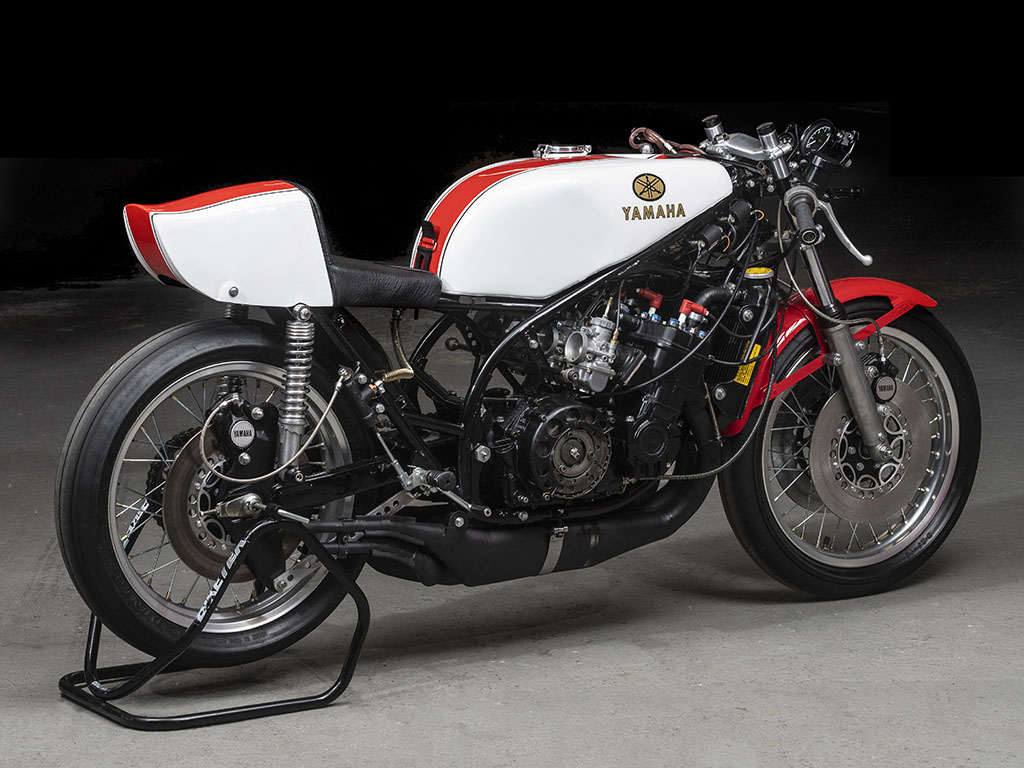People would have you believe The ' A ' was built specifically for DAYTONA , and ' as set up ' was useless anywhere else . First Change to do was the fish oil 2 in travel rear shocks .
I wonder what frame they copied . Like the Suzuki , the later monoshock ones mightve steered . A Firm Hand is a polite way of describeing
the necesary riding tecnique .
Later BROADER powerbands made the less homicidel . A far cry from a weenie 250 / 350 TZ , with typical 18 yr old 8 stone nutter rider .
Hanging on , teeth clenched . If you Double the inertia ( 750 ) then to double the the rider muscle might do it , if it isnt a ' whip iron '.
One Inch Diameter main frame loop tube must have staggering load carrying capeability . I declined the opertunity to bend one ,
Described as trying to ' cross the road ' at the Pukekohe back straight kink , at 180 . 130 into pit straigt exit bend , drift . 90 left . m.p.h. .
as the ' dogs ' ( tyres ) were onit since Daytona , and it was said to be for a museum , I thought the risk of a fault could be catastrophic .
Mechanically of inner tubeally . Grotty old race bike. Needed a polish & service . Ring ding ding . When theres Vincents in the shed .
========================================================================================

progress-is-fine.blogspot.com
Expression . " will it , wont it , might it . MAKE IT . " hangonand hope . No wonder he got the George Medal .

Definately classified as to much power . Or Is That Not enough Handling . Or isit Road Holding .
Of course, they had it easy . as the roads were sealed , in those days .







